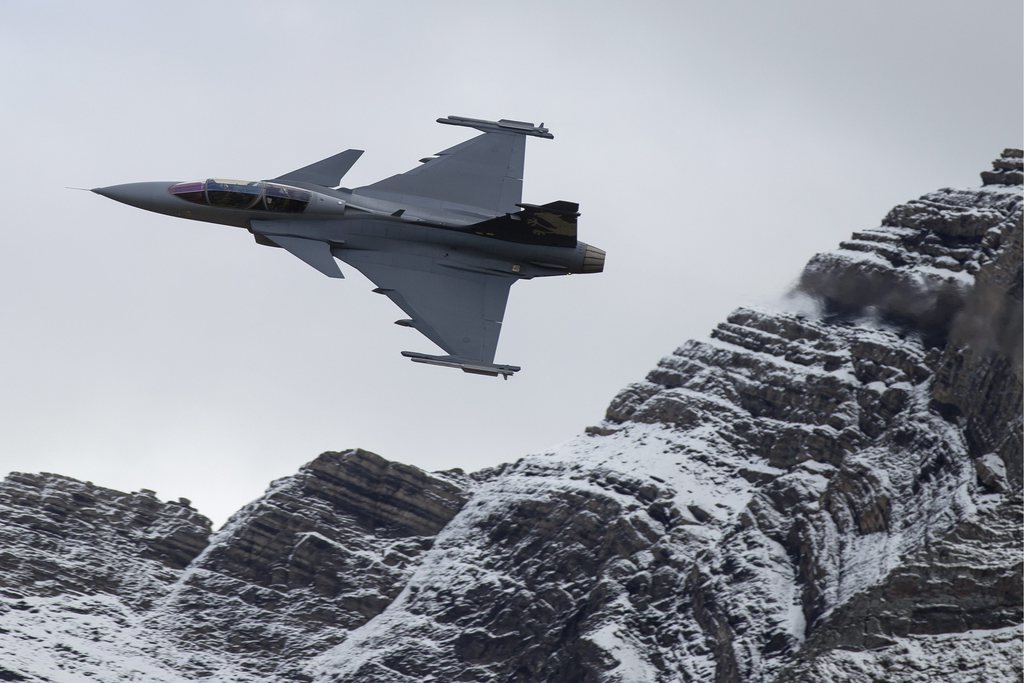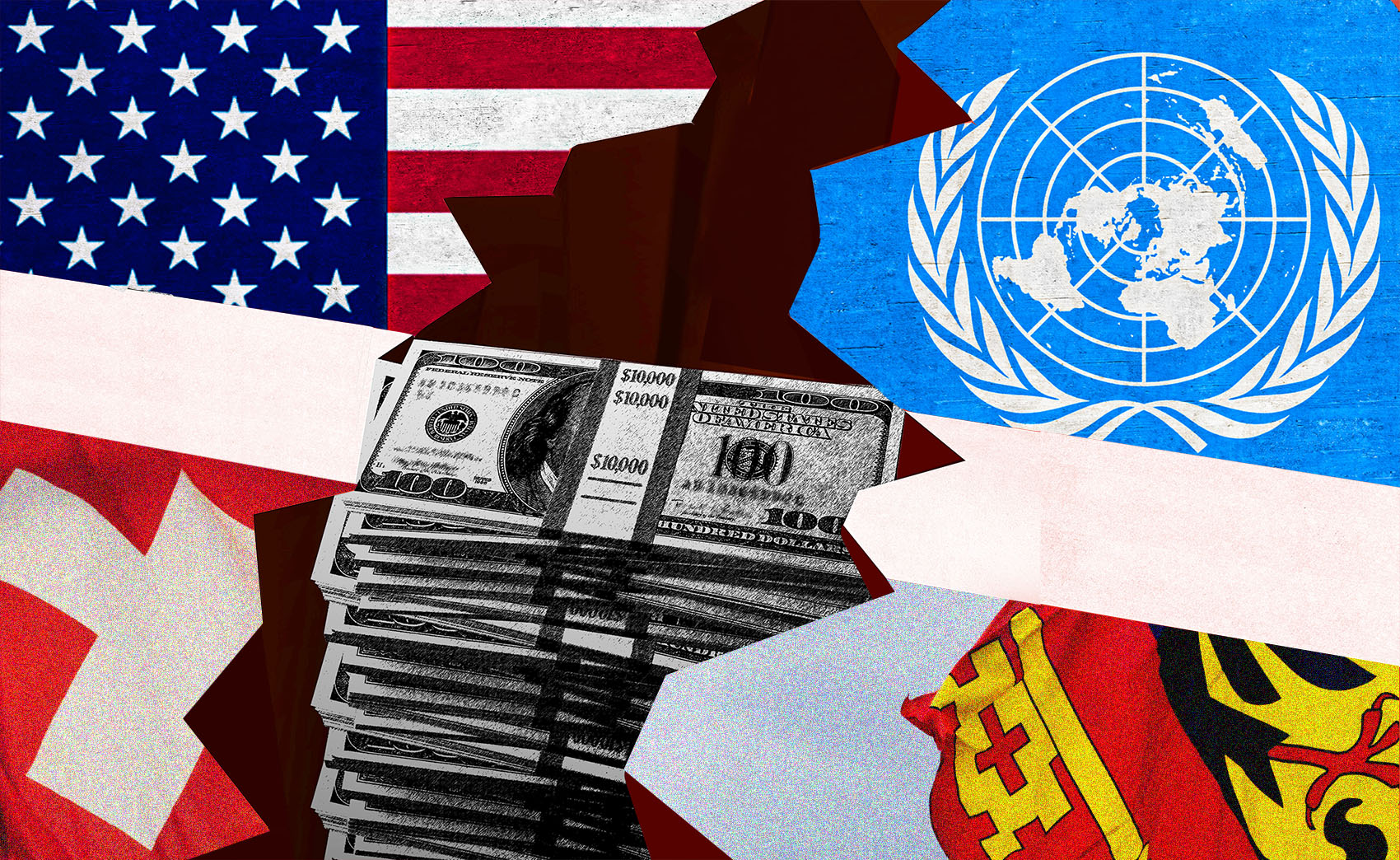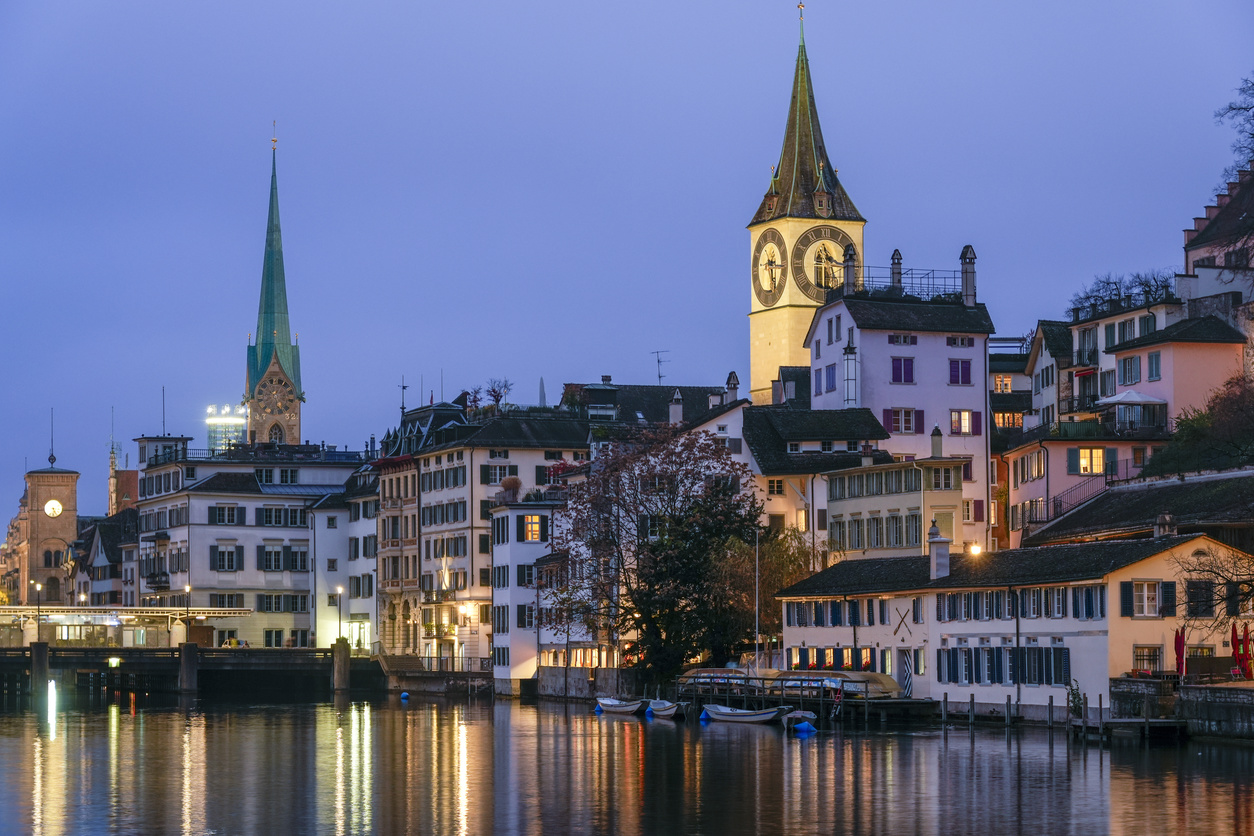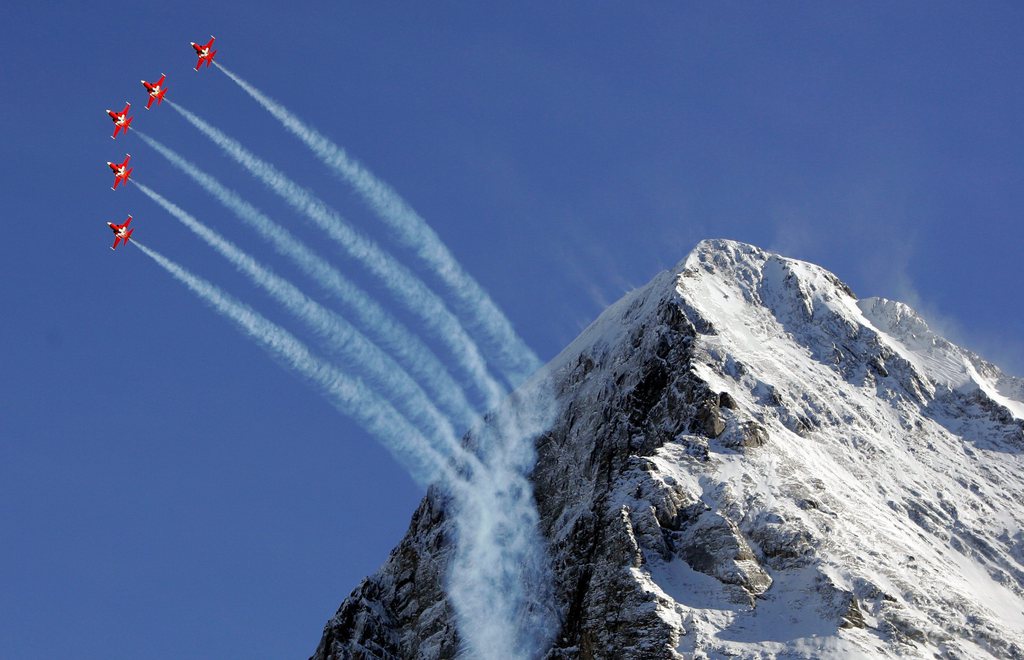Row jeopardises purchase of new military jets

The government and the Swiss armed forces want to buy a new fighter jet: the Swedish Saab Gripen. However, diverging opinions on the mission of the air force, the type and number of crafts needed, threaten to bring a possible deal down.
Experts agree on one thing: It would only be required in order for the Swiss Air Force to carry out its mission of protecting national air space in the event of a terrorist attack. Even the pacifist Switzerland without an Army group, which opposes the purchase of new planes, is not totally averse to the idea.
Defence expert Peter Felstead from the IHS Jane’s Defence Weekly publication says air combat fighters are best to conduct this kind of mission. A surface-to-air defence system surely offers protection, but it’s not optimal.
“Surface-to-air missiles are an efficient way to defend an air space, particularly within limited areas, but you can’t really fire off a warning shot with it, as you can do with an aircraft gun,” Felstead says.
Switzerland could also cooperate with other countries to accomplish this sky policing mission. But in addition to problems of sovereignty there are some technical issues as Yvan Perrin, a senior member of the rightwing Swiss People’s Party explains.
“Imagine a hijacking like on September 11, 2001 in the United States… A firing order must be given to shoot down a hostile aircraft; the authorities of the concerned country do so and the order may then transit through army staff in another country.”
“This would be very delicate, and I think by the time the pilot receives the order, it’s too late,” says Perrin, who sits on a parliamentary security policy committee.
Divide
The tasks of the air force also include air combat and the destruction of objects on the ground. But while sky police missions are not much disputed, quite the opposite applies to purely military missions.
There is a divide between the political left and the right. The Social Democrats and the Greens tend to think that a renewal of the air force is not justified as there is no real threat against Switzerland.
“The risk of a foreign military plane threatening Switzerland is very small,” says Social Democrat senator Géraldine Savary.
“Considering that the army must become leaner and more modern, this purchase will weigh on necessary investments,” she adds.
Perrin’s reasoning is different. “We certainly don’t have a foreign army setting up camp at our borders. But a purchase today is an investment for the next 30 years. It is a gamble on the future. You can’t risk going without an air force.”
Policing the skies
For those who advocate that the Swiss Air Force must above all carry out a sky police mission, the currently available means – a fleet of 33 F/A-18 – are for the moment sufficient and adequate.
“For the Social Democrats air space surveillance is sufficient,” says Savary. “We already have the necessary means at our disposal, and Switzerland also possesses some drones.”
“We really have pretty much everything we need to control the sky,” adds Christophe Barbey of the pacifist Switzerland without an Army group.
“Switzerland does not need any new planes to defend itself. Buying new planes still is and would always be considered as excessive. It’s a waste of money to satisfy the logic of war.”
It’s an opinion shared by Savary: “Are those planes really indispensable when we have to invest into health, transport and education?”
Increasing doubts
A majority in both parliamentary committees backs a renewal of the air force. They say the Tiger fleet has to be replaced, and the F/A-18 is starting to become dated.
At the end of a complex evaluation procedure, the cabinet and the armed forces picked the Swedish Gripen over the French Rafale and the European Eurofighter, notably for financial reasons.
“Fighter jets are indeed very expensive. That’s why it was expected that Switzerland would buy the Gripen. As other European states such as Sweden, the Czech Republic and Hungary are using the same planes, the costs for support and maintenance may be reduced through an international cooperation,” the British specialist Felstead says.
However, critics say the Gripen fighter jet is less effective than its competitors. All of a sudden, even some advocates of the fighter jet have become sceptical.
“There is the saying ‘Buy in haste, repent at leisure’,” says Perrin. “It’s worrying to think that we will now buy an aircraft for the next 30 years, that’s already today largely obsolete.”
Crash in sight?
The acquisition of the new plane has yet to be discussed in parliament, and voters will most likely have the final say.
Observers say the plan got off to a bad start nearly three years ago. And it is widely expected that the left will reject the funding bill in parliament in 2013, but opposition could also come from the right.
“On the right, there is a real divide over the type of plane. I feel a lack of enthusiasm, even a real resistance, towards the Gripen,” says Savary.
A nationwide vote could very well reject the Swedish plane.
“Citizens are not really convinced about the necessity of buying a new plane,” says Perrin. He fears for the worst if they are told that parliament and the government chose an aircraft that does not really fulfil the criteria.
Switzerland currently has two types of interception planes.
54 Northrop Freedom Fighter (Tiger), which should be replaced in 2015.
33 McDonnell Douglas F/A-18 Hornet (the 34th was lost in flight in 1998).
The Saab Gripen has been conducting test flights in Switzerland since July 2008.
It was chosen over the French plane Rafale (Dassault) and over the Eurofighter Typhoon produced by the European consortium Eurofighter (Britain, Germany, Spain and Italy).
In August 2012, Switzerland and Sweden signed a blanket agreement over the acquisition of 22 Saab Gripen by Switzerland.
March 2009: Cabinet decides on funding principle of new fighter jets – SFr300 million annually from regular armed forces budget.
August 2010: Initial 2015 deadline for acquisition put off.
Nov 2011: Cabinet chooses Swedish Gripen over French Rafale and European Eurofighter.
Nov 2012: Cabinet approves armament programme, including SFr3.1 billion for Gripen jets.
2013: Parliament to discuss budget for armed forces, including acquisition for Gripen.
2014: Possible nationwide vote.
2018: First Gripen aircraft to be delivered.
(Adapted from French by Chantal Britt)

In compliance with the JTI standards
More: SWI swissinfo.ch certified by the Journalism Trust Initiative












You can find an overview of ongoing debates with our journalists here . Please join us!
If you want to start a conversation about a topic raised in this article or want to report factual errors, email us at english@swissinfo.ch.